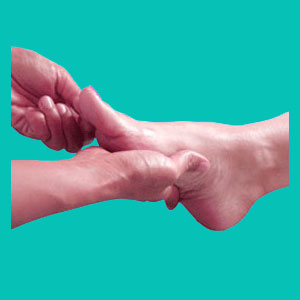
Herniated disc foot drop is part of the possible symptomatic profile of some diagnosed lumbar disc pain conditions. While foot drop can and does happen from structural compression of a nerve root, there are also other more common and less diagnosed explanations for the event. It is crucial to understand these possibilities before undergoing any drastic or invasive herniated disc treatment or surgery, since once neurological or spinal damage is done; there may be no undoing it.
Foot drop is a frightening syndrome, since patients can actually experience the functional limitation produced by nerve compression firsthand. They will not be able to ambulate normally and some may also suffer agonizing pain along with the reduced physical mobility.
The scope of this article will define and detail foot drop in relation to disc pathologies. We will discuss why foot drop occurs and other common causes of the condition besides lumbar disc prolapse.
Herniated Disc Foot Drop Explanation
Foot drop is a colloquial term used to describe a condition in which the patient has difficulty in elevating the front of the foot while leaving the heel on the ground. It is most often diagnosed as coming from L5 nerve root compression, but may also be diagnosed as being caused by L4 or S1 in other rare cases. These nerve roots all serve drastically different areas of the anatomy, providing the first clue that structural compression may not be the likely source of symptoms after all.
While the physical expression of foot drop can be diagnosed easily by any type of doctor, it is wise to seek out the underlying cause of the symptom using the services of a spinal neurologist.
Potential Causes of Foot Drop
A herniated disc or arthritic osteophyte complex can impinge on a nerve root in some cases, causing functional impairment and subsequent foot drop. However in these cases, there is little doubt as to the actual source, since diagnostic testing will confirm a particular root being affected and the symptoms will match the clinical expectations exactly. This does not always occur.
In some instances, a lumbar herniated disc is present, but does not seem to be compressing any nerve root, even if it is partially blocking the neuroforaminal opening. Although this is enough for most doctors to make the diagnosis, the ideology is flawed and the results will be the usual abysmal failure when it comes to treatment. In most of these cases, the herniated disc is coincidental and innocent and the real reason for the pain and foot drop is another source process.
Spinal stenosis virtually anywhere in the anatomy can enact foot drop. Nerve damage or dysfunction anywhere along the length of the sciatic nerve can also do the same.
Regional ischemia is a nonstructurally induced process which can deprive nerves of oxygen and therefore affect their ability to function. Being that this process usually affects a larger area than a herniated disc could ever do, there are often far more symptoms than should be experienced from a single compressed spinal nerve root. This fact can provide a clue to the underlying cause of foot drop and a diversity of accompanying symptoms.
Herniated Disc Foot Drop Assistance
Do not assume to blame foot drop on a herniated disc, since statistics show that it occurs in many cases where the disc is not the cause at all. Be especially careful about undergoing surgery for said disc protrusion, since misdiagnosis is the major reason for the poor curative results offered by most medical herniated disc therapies.
If your symptoms do not match the clinical expectation or diagnostic evidence, I strongly recommend that you consider learning more about ischemia and the other possible reasons for foot drop and sciatica before seeking treatment. That being said, cases of definitive disc-induced nerve compression, leading to a frontal foot dorsiflexion deficit, usually do resolve well with appropriate care. The best approaches include nonsurgical spinal decompression, discectomy, foraminotomy and laminectomy.
Herniated Disc > Herniated Disc Symptoms > Herniated Disc Foot Drop




